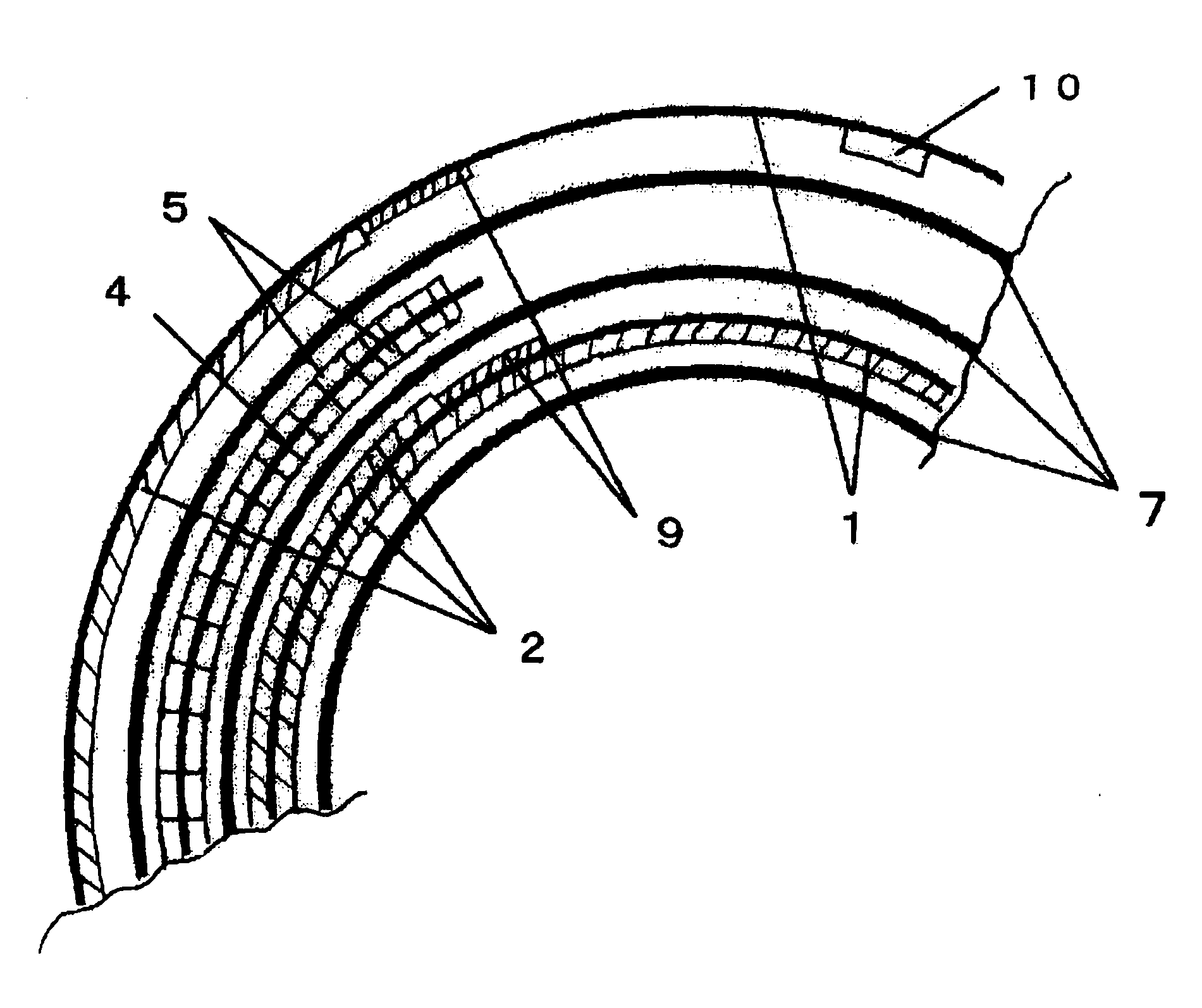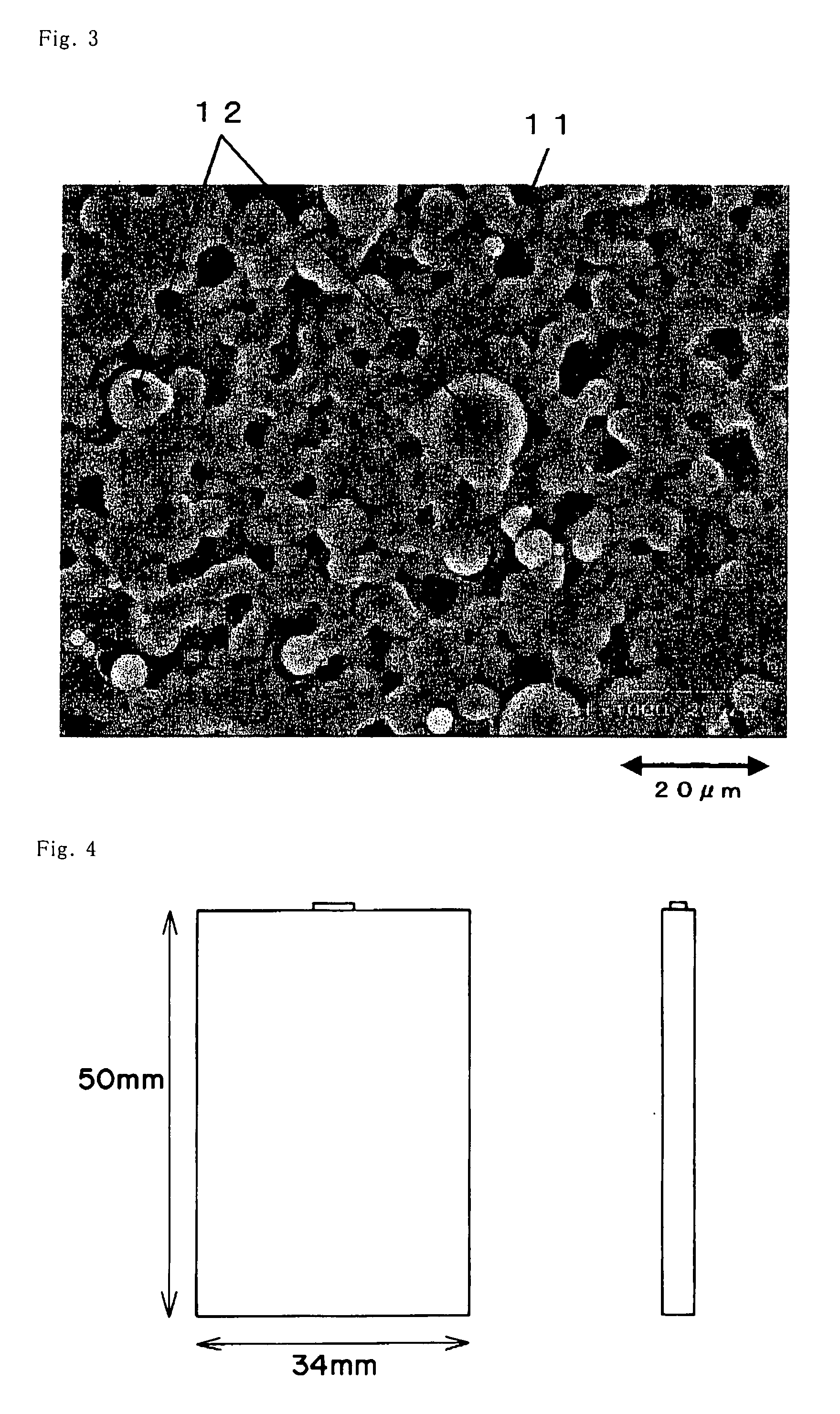Non-aqueous electrolyte battery
a technology of electrolyte battery and non-aqueous electrolyte, which is applied in the direction of non-aqueous electrolyte cells, wound/folded electrode electrodes, sustainable manufacturing/processing, etc., can solve the problems of large amount of heat generated, large short-circuit current, and short-circuiting, so as to prevent heat generation
- Summary
- Abstract
- Description
- Claims
- Application Information
AI Technical Summary
Benefits of technology
Problems solved by technology
Method used
Image
Examples
example 1
[0040] Production of Positive Electrode
[0041] Eighty-five (85) parts by weight of LiCoO2 as a positive electrode active material, 10 parts by weight of acetylene black as a conductive assistant, and 5 parts by weight of PVdF as a binder were uniformly mixed with N-methyl-2-pyrrolidone (NMP) as a solvent to prepare a paste containing a positive electrode mixture. This paste was applied on both surfaces of a 15 μm thick aluminum foil as a current collector, so that the length of the active material applied onto the front surface was 280 mm and the length of the active material applied onto the back surface was 210 mm, and then dried to form positive electrode mixture layers on the current collector.
[0042] Then, the positive electrode mixture layers were calendered to adjust the total thickness of the current collector and the positive electrode mixture layers to 150 μm, and the current collector having the positive electrode mixture layers formed thereon was cut to form a positive e...
example 2
[0051] A non-aqueous secondary battery was produced in the same manner as in Example 1 except that the polyethylene powder was replaced with a polyethylene powder having an average particle size of 3 μm (FLO-BEADS LE1080 (trade name) manufactured by SUMITOMO SEIKA CHEMICALS Co., Ltd.) and that the thickness of the insulating resin layer was changed to 6 μm.
example 3
[0052] A non-aqueous secondary battery was produced in the same manner as in Example 1 except that the polyethylene powder was replaced with a polypropylene powder (PPW-5 (trade name) manufactured by SEISHIN ENTERPRISE Co., Ltd.; average particle size: 6 μm).
PUM
| Property | Measurement | Unit |
|---|---|---|
| thickness | aaaaa | aaaaa |
| particle size | aaaaa | aaaaa |
| thickness | aaaaa | aaaaa |
Abstract
Description
Claims
Application Information
 Login to View More
Login to View More - R&D
- Intellectual Property
- Life Sciences
- Materials
- Tech Scout
- Unparalleled Data Quality
- Higher Quality Content
- 60% Fewer Hallucinations
Browse by: Latest US Patents, China's latest patents, Technical Efficacy Thesaurus, Application Domain, Technology Topic, Popular Technical Reports.
© 2025 PatSnap. All rights reserved.Legal|Privacy policy|Modern Slavery Act Transparency Statement|Sitemap|About US| Contact US: help@patsnap.com



